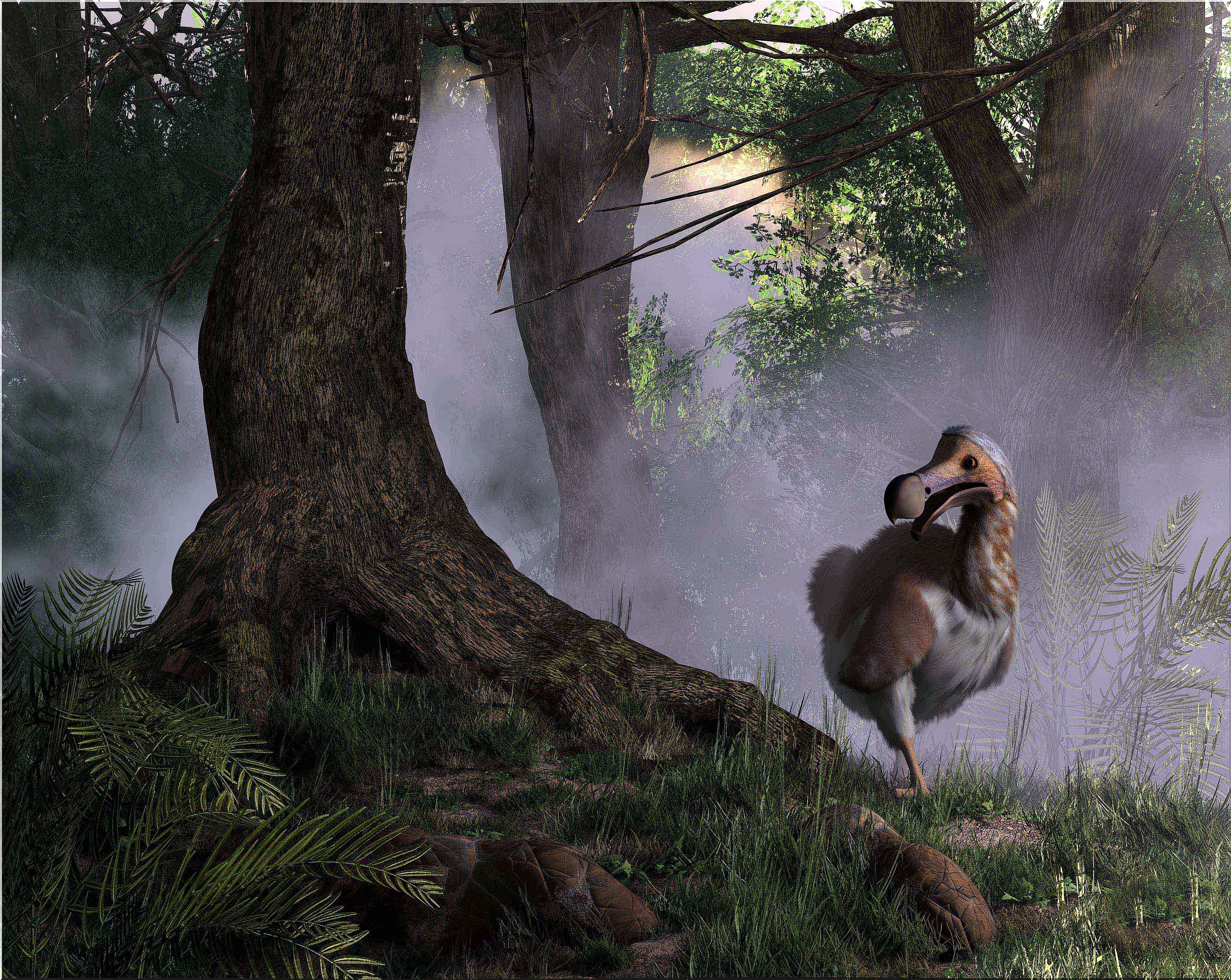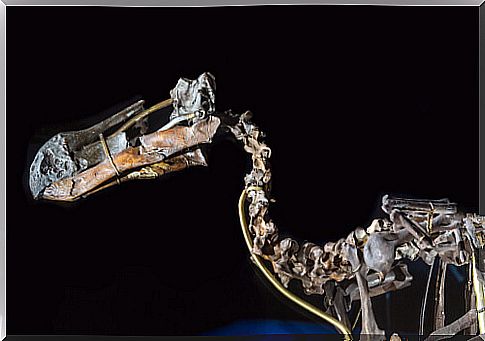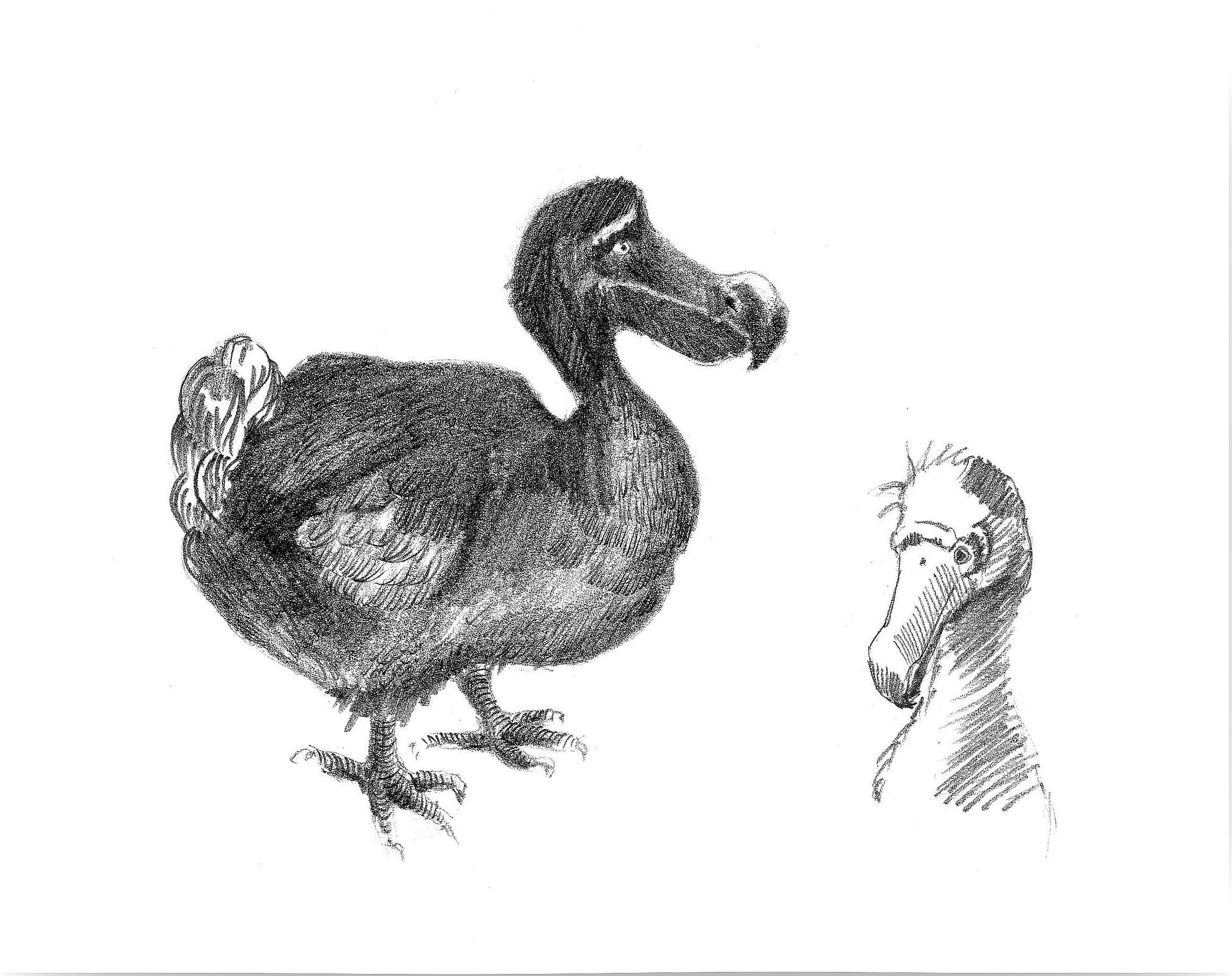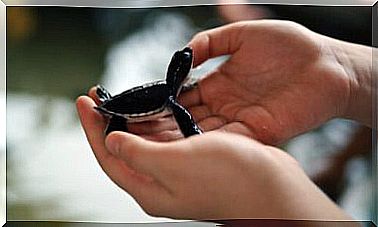The Dodo: The Story Of An Extinct Bird

More has been written about the dodo ( Raphus cucullatus ) than about any other bird in the world. Unfortunately, much of the data that has survived to this day comes from legends and illustrations that, while spectacular, have led to errors about what this animal really was and how its extinction occurred.
The physical appearance of the dodo
The dodo was a flightless columbiform – like pigeons – endemic to Mauritius, in the Indian Ocean. Only skeletal remains, drawings and stories have been found of it.
Through the data collected, the researchers believe that it was a large and heavy bird : they could reach a meter in height and weigh between 13 and 25 kilograms. Their femurs, tibiae and tarsi were long, so the dodos must have very muscular legs. On the other hand, the wing bones show that those limbs were greatly reduced, so they couldn’t fly.
The skeletal remains also show that the dodo had a large beak, about 20 centimeters long. Its shape reveals that it was a mainly granivorous bird – it fed on large seeds and fruits. His favorite food was most likely the seeds of the tambalacoque tree ( Sideroxylon grandiflorum ).
A study published in the Zoological Journal of the Linnean Society has shown that dodos had a highly developed olfactory bulb. As a consequence, we now know that dodos had an extremely developed sense of smell and this probably helped them find seeds buried deep in the ground, which they dug up with their strong legs.

How and why did the dodo go extinct?
It took humans less than 100 years to kill the dodo. Since their arrival on the island in the 16th century, humans hunted this and other birds that naturally had no predators. Therefore, they also did not have the means to defend themselves.
It seems that the dodo was a very tame bird, easily captured and did not show fear towards the new colonizers of the island. Because of this, sailors hunted dodos easily, which led to their extinction.
The last reliable sighting on record was in 1662. Later, other reports may refer to a bird similar to and confused with the dodo, the red rail ( Aphanapteryx bonasia ). Despite this, the statistical techniques for predicting the probability of a species becoming extinct, published in the journal Science , indicate that it is very likely that the dodo resisted until the year 1690.

Other birds in the same situation
The dodo is not the only bird unable to fly extinct by human causes. In fact, the list of birds that have disappeared from the Earth in periods of time less than a century, since they crossed the path of man, is more than a hundred. Next, we show you a small series of examples of some of the birds already extinct due to the same causes as the dodo.
- Red rail ( Aphanapteryx bonasia )
- Elephant bird ( Aepyornis maximus )
- South Island Giant Moa ( Dinornis robustus )
- Coastal moa ( Euryapteryx curtus )
- Common kiwi ( Apteryx australis )
- King Island Emu ( Dromaius novaehollandiae ater )
- Kangaroo Island Emu ( Dromaius baudinianus )
- Arabian ostrich ( Struthio camelus syriacus )
- Amsterdam Island Mallard ( Anas marecula )
- North Island Goose ( Cnemiornis gracilis )
- Giant Alca ( Pinguinus impennis )
- North Island Aptornis ( Aptornis otidiformis )
- Hawkins rail ( Diaphorapteryx hawkinsi )
- Swamphen of Santa Helena ( Aphanocrex podarces )
The extinction of species is not only harmful to the organism involved. Each species plays a fundamental role in global ecology, no matter how small. The consequences of such numerous extinctions can affect each and every one of the beings that inhabit the planet.








